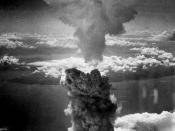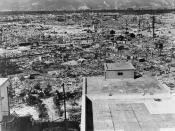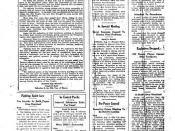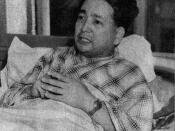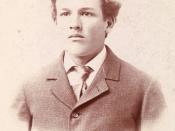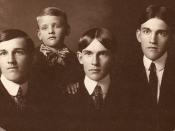Analysis and Summary of "A Noiseless Flash from Hiroshima" "A Noiseless Flash from Hiroshima," written by John Hersey, is a depiction of events that occurred before and during the drop of the atomic bomb. He writes an account given by six survivors living in Hiroshima at the time of the bombing. Hersey introduces us to a clerk, two doctors, a widow, priest, and a pastor. By finding six people that were all in different areas of Hiroshima and of different economical status, Hersey's audience is able to see the effects of the bombing from many different perspectives. Hersey introduces his reader to Reverend Mr. Tanimoto. Hersey explains that the reverend, as much of Hiroshima, had been sick with anxiety. Japan knew it was a matter of time before Hiroshima would be hit. Therefore, through evacuation programs, Hiroshima's population went from 380,000 to 245,000. Mr. Tanimoto recalls being very tired that morning; however, he still had many portable belongings that needed safekeeping when the bombing occurred.
Mr. Tanimoto was different than the other five survivors in that he was educated in the United States and still to some extent held ties to the U.S. The second person the reader is introduced to is the tailor's widow and her three children. We are told that she and her three children evacuated their home to a "safe area", however when the B-29 bombers passed she packed up and returned to their home. Upon their arrival home another distress alarm sounded; this one Mrs. Nakamura ignored. As we meet each of the six survivors, all of them recall the same two details. The first is, due to so many false distress alarms, the alarm that warned of the atomic bomb, was mostly ignored or taken lightly. The second is that all six people no matter where they were, from the closest to the farthest distance, describe a blinding light and a strong force throwing them violently from where they were. The account of these six stories touches the reader's heart and allows us to identify with the sadness the bomb brought, rather than distancing ourselves by seeing differences between the Japanese and Americans.
